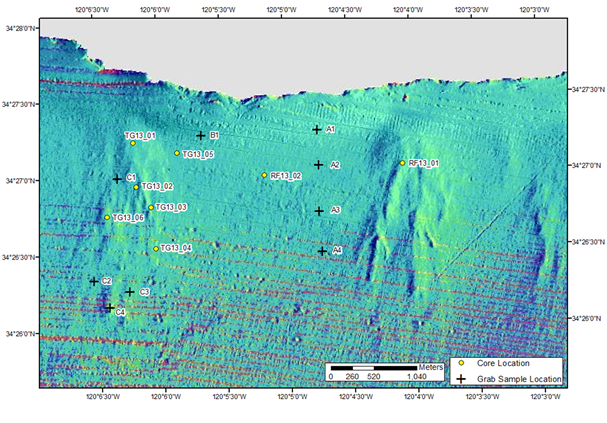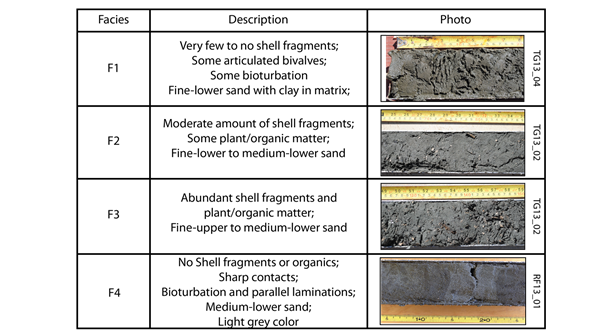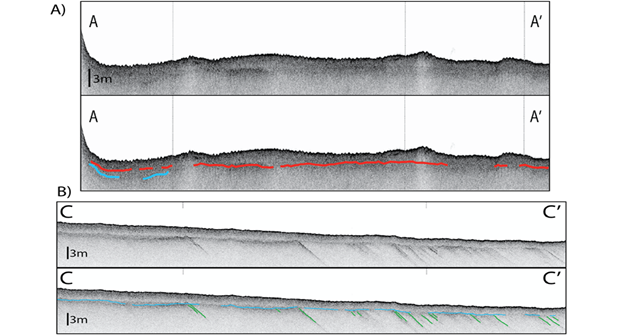Reports: ND852790-ND8: Hyperpycnal Subaqueous Fans of the Northern Santa Barbara Channel, Central California
Alexander R. Simms, PhD, University of California, Santa Barabara
Figures
Figure 1. Location of all cores and grab samples collected on the subaqueous fans of the northern Santa Barbara Channel.
Figure 2. Facies found within the cores collected on the subaqueous fans of the northern Santa Barbara Channel.
Figure 3. Examples of seismic facies found in seismic surveys across the subaqueous fans of the northern Santa Barbara Channel.














